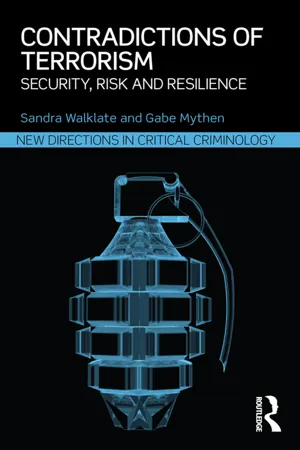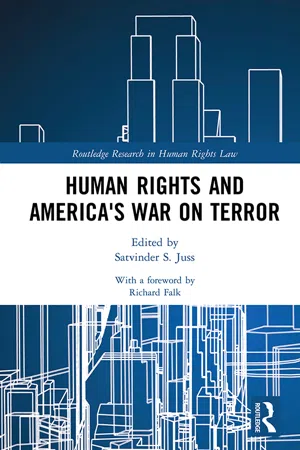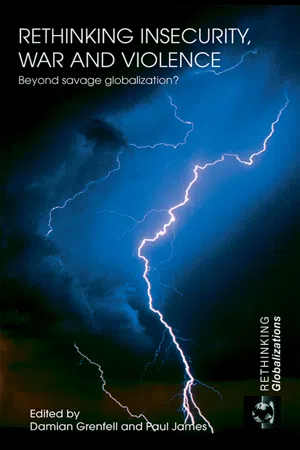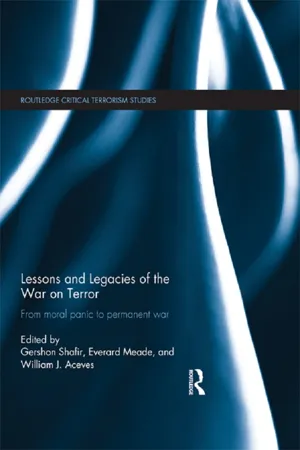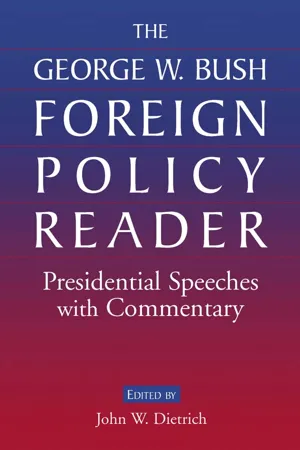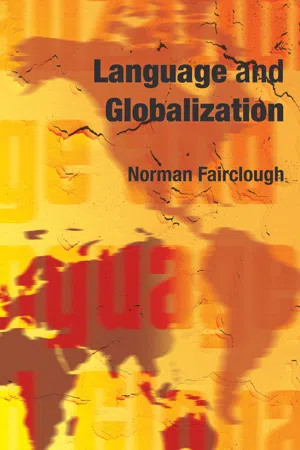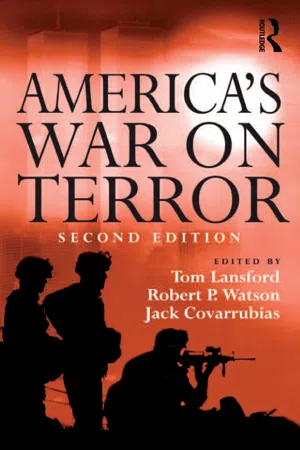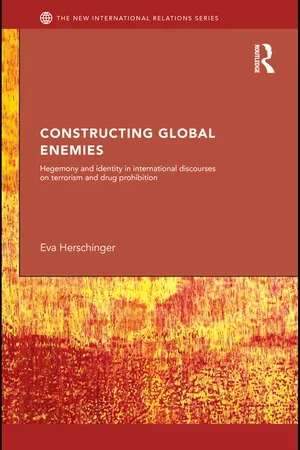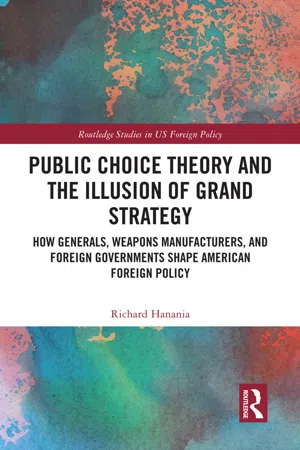History
War on Terror
The "War on Terror" refers to the global military, political, and ideological campaign initiated by the United States and its allies in response to the September 11, 2001 terrorist attacks. It aimed to combat terrorism, particularly targeting Al-Qaeda and its affiliates, and involved military operations, intelligence gathering, and diplomatic efforts. The campaign led to significant changes in international security policies and military interventions in Afghanistan and Iraq.
Written by Perlego with AI-assistance
12 Key excerpts on "War on Terror"
- eBook - ePub
Contradictions of Terrorism
Security, risk and resilience
- Sandra Walklate, Gabe Mythen(Authors)
- 2014(Publication Date)
- Routledge(Publisher)
Beck’s (2002 : 8) view, there has been an ‘individualization of war’, whereby conflicts are not simply waged between States, but also by individuals and groups against each other and against the State. Such ‘post-national’ wars have multitudinous effects and challenge established methods of calculating risk and encouraging the reconstitution of security practices. Before we engage with these broader complexities, it is first necessary to define the central post-national conflict of the present century that is our primary focus here: the War on Terror.Defining the War on Terror: contours and spikes
The War on Terror (WOT) – also sometimes referred to as the Global War on Terrorism (GWOT), and, in the British context, the ‘war against terrorism’ (WAT) – is a phrase coined by the former American President George W. Bush. It refers to a concatenation of security processes and military practices set in train after the terrorist attacks on the United States in 2001. In direct response to 9/11, George W. Bush declared that the attacks constituted an act of war, thereby setting the framework for the militaristic response to follow (see van Brunschot and Kennedy, 2008 : 89; Pilger, 2012 ). Bush first publicly used the phrase ‘War on Terror’ in an address to a joint session of Congress on 20 September 2001: ‘our War on Terror begins with Al-Qaeda, but it does not end there. It will not end until every terrorist group of global reach has been found, stopped and defeated’ (Bush, 2001 ). From this moment forth, the ‘War on Terror’ became a widely used idiom in politics, security and intelligence circles, academia and in the media. In many respects, the WOT has served as a linguistic shorthand that encompasses an amorphous range of activities. Setting clear boundaries between ally and foe, the unashamedly bullish discourse of the WOT constructs a range of descriptors to determine the enemy, such as ‘rogue states’ and ‘outlaw regimes’ (see Whittaker, 2012 : 332). Viewed through this monocular, not only countries but entire regions have been accorded risky status. Within the discourse of the WOT there is an amalgamation of problematic States that are collectively considered as an ‘axis of evil’ – variously including Iraq, Iran and North Korea (see Martin, 2013 : 103). Such malevolent States and actors are directly contrasted with an honourable and righteous ‘coalition of the willing’ in order to create clear boundary lines between a righteous ‘us’ and a malicious ‘them’ (Lilleker, 2006 : 108). The political manufacture of consent by George Bush and Tony Blair, expressed succinctly in the maxim: ‘you are either with us or you are with the terrorists’ (Bush, 2001 ) constructed the enemy as both beyond reason and dispossessed of moral values, and simultaneously affirmed the need to simply eradicate malevolent actors discounting any possibility of negotiation or dialogue (see Pilger, 2012 : 88). As such, the language of the WOT is intended to ideologically coerce and to manufacture public consent for international military forays: ‘the new axis of evil (ever expanding or reconstituted according to expediency) has a similar function to the old enemy in disciplining populations internally as well as mobilizing war footings for adventures abroad’ (Poynting and Whyte, 2012 : 8). As Keppel (2009) has argued, the WOT discourse can be understood as an attempt to create a persuasive grand narrative to justify US foreign policy to the public after 9/11. However, such intentions cannot be said to have produced positive outcomes, either at an ideational or a material level. Furthermore, as we shall illuminate, use of the term ‘war’ in the context of terrorism linguistically permits exceptional and otherwise unacceptable forms of intervention and violence by the State (see Sciullo, 2012 - eBook - ePub
- Satvinder S. Juss(Author)
- 2018(Publication Date)
- Routledge(Publisher)
2 United States legal and policy approaches in the Global War on TerrorismMilena Sterio1Every nation in every region now has a decision to make: Either you are with us or you are with the terrorists.2Introduction
The War on Terror (WoT), also known as the Global War on Terrorism (GWoT), is a term invented by United States President George W. Bush in the wake of the 9/11 terrorist attacks on the World Trade Center.3 These two terms have been used initially to refer to the international military campaign that started after the 9/11 attacks on the United States.4 The Bush administration, as well as most Western media outlets, have since used these terms to designate a more global struggle, of a military, legal, and geopolitical nature, against terrorists, terrorist organizations, and various world regimes supporting them.5 In 2013, President Barack Obama announced that the United States was no longer pursuing a War on Terror. According to President Obama, “We must define our effort not as a boundless ‘Global War on Terror,’ but rather as a series of persistent, targeted efforts to dismantle specific networks of violent extremists that threaten America.”6 In reality, despite the change in presidential rhetoric, many of the policies and features of President Bush’s War on Terror were continued under President Obama, and, for the purposes of this chapter, various War on Terror tactics will be discussed and evaluated regardless of whether they occurred under President Bush or President Obama.While the original focus of War on Terror strategies was on al-Qaeda and countries associated therewith, as it will be demonstrated in this chapter, the War on Terror has resulted in multiple international and domestic policies, military campaigns, and enhanced intelligence efforts throughout multiple world regions, and several domestic laws, which have affected non-al-Qaeda affiliated regions and organizations, as well as the United States internally. Thus, it is the conclusion of this chapter that the War on Terror has been “fought” in an unnecessarily broad manner with few geographic, temporal, or legal boundaries. This chapter will first discuss the overall scope of the War on Terror and, in this section, it will introduce the most important legal and policy initiatives, domestically and abroad, which were developed as part of the War on Terror. Next, this chapter will focus on the most significant aspects of the War on Terror: the use of drones (internationally), the National Security Agency (NSA) surveillance program (domestically), and the detention of terrorism suspects at the United States military base at Guantanamo Bay in Cuba, as well as the ensuing litigation. - Alice Martini, Alice Martini(Authors)
- 2020(Publication Date)
- Routledge(Publisher)
The notion that liberal warfare is now humane and definable is part of the lie of the way that wars are fought. Michael Neu informs us that liberal justifications set "the very rules for how a moral discussion about war is to be conducted" (Neu 2018, 77). These justifications, however, mask the extent of the war experience, particularly in spaces outside of the warzone. If we turn to Shane Brighton's third proposition on the phenomenology of war, we are presented with the notion that even in post-conflict, or as I propose to extend Brighton, peacetime geographies outside of the "conflict-zone", the logics of war continue to pervade. The War on Terror is, perhaps, the ultimate global manifestation of this. There are very few parts of the world that are not touched by its footprint. Whether it is through the global trafficking of suspected terrorists on unlawful rendition flights, or narratives around ideologies of Islam, they all form a consistent narrative of a continued conflict.As evidenced from Khalili, much of counterterrorism in a domestic setting has been constructed from the world of counterinsurgency. Rizwaan Sabir writes of the way in which coercive surveillance and propaganda is deployed by the state in order to neutralise those who might, in a pre-crime sense, become future threats or those who speak through "the language of Islam" (Qureshi 2017a, 4). Sabir specifically draws the analogy of domestic policy creating an environment of conflict, and how the logics of counterinsurgency manifest themselves broadly by eroding the "distinction between civilians and combatants" (Sabir 2017, 12).For me, the War on Terror replicates the idea of a global war, one that finds itself at home domestically. As I note at the start of my autoethnographic published paper "Fight the Power", on the ways in which CAGE resists within an environment of suspicion:... the article argues that the violence and repression that has been targeted at CAGE is very much a continuation of historic policies targeted at people of colour/anti-racism activists in circumstances such as the Black Civil Rights movement in the United States or the antiApartheid movement in South Africa. The article concludes by offering some thoughts on what the targeting of a group such as CAGE, which seeks to engage in counter-hegemonic resistance activities suggests as well as the repercussions of the state's coercion and violence against such resistance. (Qureshi 2017a, 2)- eBook - ePub
The 'War on Terror', State Crime & Radicalization
A Constitutive Theory of Radicalization
- Shamila Ahmed(Author)
- 2020(Publication Date)
- Palgrave Macmillan(Publisher)
radicalization and therefore terrorism.The date 9/11 must be understood in relation to the end of the Cold War, the rise of religious and political Islam (Crockatt, 2003 ), as well as, amongst other things, the construction of fear, weapons of mass destruction , arms deals, oil and foreign policy and geo-political bias. The events of September 11th had a profound impact on the world and its understanding of threat, risk , violence and safety. As Oliverio and Lauderdale (2005 : 160) state,the extraordinary drama of watching two of the most prominent pillars of the global economy be destroyed in the blink of an eye and with the ‘simplest’ of methods’… ‘left many people horrified and resolute that ‘terrorism’ must cease to exist.The global response to the attacks was vital in constructing the boundaries which framed interpretations and understandings of the terrorist attacks. The United States and the United Kingdom , amongst other states, conceptualized the response to the terrorist attacks as a war. In a television interview on 16 September 2001, British Prime Minister Tony Blair stated: ‘the fact is that we are at war with terrorism … it is a war, if you like, between the civilised world and fanaticism’ (Blair, 2001 cited McInnes, 2003 ). War became synonymous with terrorism in a discourse which proclaimed that fanatics could be stopped only through military warfare . However, as Ruggiero (2007 : 214) states, this warfare approach involved a ‘coalition of governments attacking a coalition of peoples’. It gave ‘those who want to invade and destroy “carte blanche” to do as they wish’ (Ruggiero, 2007 : 212). The emerging ‘War on Terror’ discourse articulated an enemy identifiable by their (racial) appearance and, through doing so, it produced a racist global discourse (Mutimer, 2007 ). The ‘War on Terror’ discourse , with its emphasis on military warfare - eBook - ePub
Rethinking Insecurity, War and Violence
Beyond Savage Globalization?
- Damian Grenfell, Paul James(Authors)
- 2008(Publication Date)
- Routledge(Publisher)
Part II Reconceptualizing securityPassage contains an image
5 New wars and the therapeutic security paradigm
Michael Humphrey
The “War on Terror” was declared by the USA in response to a new kind of war, “global terrorism.” The development of counter-terrorism at home and pre-emptive war abroad signified a major change in how the USA, the only global superpower, was going to meet the new political and military challenges in the post-Cold War era. Yet while we are told “the world changed forever” by the events of September 11, this ignores the way earlier post-Cold War challenges of civil war, genocide, and terrorism in the 1990s had already begun to shape Western military and security policies about intervention and conflict prevention. Global terrorism and the War on Terror are only one action-reaction pair in the West’s security responses to the new forms of political violence since the end of the Cold War. A new lexicon of political violence has been coined to describe new forms of intra-state or non-state violence and warfare—”ethnic cleansing,” “urbicide,” “genocide,” “terrorism,” and “new wars”—and Western responses to this violence including humanitarian intervention,” “human rights war,” “perpetual war,” “pre-emptive war,” and “war against terror.” Alongside these forms of war, I will argue, we have also seen the emergence of a new “therapeutic security paradigm” in which external intervention is justified on the grounds that either trauma in war-affected populations or irrational conflict in putatively “failed states” is the basic source of terror. Meanwhile, under changing legitimating regimes, the project of “global liberal peace” remains an extension of military power.New Wars
The “new” post-Cold War expressions of political violence can be characterized as asymmetrical violence or warfare usually undertaken between state and non-state actors. They are unconventional in the sense that they are intra-state or localized transnational wars rather than interstate wars and whole civilian populations become their primary targets with the aim of killing, injuring, and traumatizing them into submission or flight. The increased vulnerability of civilians in these wars has led to the strengthening of international law to protect them but without much success (Slim 2003). These different kinds of violence can be broadly included under the term “new wars” which Mary Kaldor argues arise in the context of the erosion of state autonomy and its monopoly over legitimate violence from above through the emergence of transnational militaries and alliances and from below through the privatization of violence (Kaldor 2001) Mark Duffield (2001) sees the new wars as systemic, explained as part of the process of global political and social transformation, rather than by specific causes such as ethnic conflict. Further, global terrorism can also be understood as an extension of these “new wars” in the periphery (in “failed states”), privatized violence harnessing the networks of globalization and deterritorializing of what were previously geographically contained conflicts. - eBook - ePub
- Gershon Shafir, Everard Meade, William Aceves(Authors)
- 2013(Publication Date)
- Routledge(Publisher)
This sweeping characterization of the enemies of the War on Terror includes groups that carried out local acts of terror but had not attacked the United States, as well as “extremists,” a category that includes adversaries that may have never employed terrorist tactics and, in certain cases, have been hostile to al Qaeda’s itself (Gerges 2005). Furthermore, the extension of the war into Iraq has intensified an external amplification cycle between the United States and al Qaeda and served as a major recruitment tool for terrorism in Iraq, Western Europe, and elsewhere (Benjamin and Simon 2005).C Disproportionate responseThe simple act of naming the official response to terrorism a war set the stage for a disproportionate response, as the metaphor of war monopolized national discourse. Though he promised to employ diplomacy, intelligence, law enforcement, and “every necessary weapon of war,” President Bush placed these instruments in the context of a war aimed at the “disruption and defeat of the global terror network.” Since 9/11, a variety of terms were used to label the U.S. response, ranging from “war against terrorist groups of global reach,” “War on Terrorism,” to “battle against international terrorism,” but the one that has caught on is “War on Terror.”The designation of the U.S. response to the 9/11 attacks as war even when the classic conditions of warfare do not obtain had a profound amplifying potential. The War on Terror is akin to other metaphorical wars declared by earlier presidents. In 1964, Lyndon Johnson was the first President to make such a pronouncement by declaring war on poverty, and President Nixon followed suit by waging war on drugs in 1971, both non-tangible and non-state enemies. The gravest danger of metaphorical wars is that they may be transformed into actual war. Nowhere has this been more evident than in the way the United States was drawn into the invasion of Iraq (see Section Four, below).D The life cycle of the GWOTThe catchphrase “War on Terror” was burnt into American consciousness on September 20, 2001 and came to define the Bush–Cheney Administration. When Presidential candidate Senator John Kerry argued in October 2004 that the term War on Terror was inappropriate since the threat of terrorism, though real, has been exaggerated, he was forced to back down (Are We Trapped 2006: 6). Ironically, as he prepared to leave the Pentagon in 2006, Donald Rumsfeld openly questioned both terms of the expression. He suggested that the term war “creates a level of expectation of victory and an ending within the 30 or 60 minutes of a soap opera. And it isn’t going to happen that way.” He also added: “Furthermore, it’s not a War on Terror.” Rather it is “a struggle or a conflict, not against terrorism but against a relatively small number, but terribly dangerous and lethal, violent extremists.” Consequently, “I guess I don’t think I would have called it the War on Terror.”11 - eBook - ePub
The George W. Bush Foreign Policy Reader:
Presidential Speeches with Commentary
- John W. Dietrich(Author)
- 2015(Publication Date)
- Routledge(Publisher)
Chapter 2The War on Terrorism
On September 11, 2001 President Bush was in Florida at an event promoting education reform. Upon learning that a plane had flown into the World Trade Center in New York, his first thought was that the pilot had suffered a heart attack. Upon hearing that a second plane had crashed into the other trade tower, his views sharply changed and he recalled thinking, “They had declared war on us … we were going to war.”1 After a chaotic day of further attacks and rapid planning, Bush spoke to the country on the evening of 9/11. In his short speech, Bush declared what would become a guiding principle of his presidency: “We will make no distinction between the terrorists who committed these acts and those who harbor them.”2 During the presidential campaign, Bush’s lack of foreign policy experience and possible dependence on advisers were major issues. Strikingly, Bush made this momentous declaration without significant consultation with Vice President Dick Cheney, Secretary of State Colin Powell, or Secretary of Defense Donald Rumsfeld.The attacks of 9/11 and Bush’s response to them radically altered his presidency, U.S. foreign policy, and the lives of millions of people around the world. In the coming months, Bush and his advisers began to plan out the war, rally the American public, build an international coalition, and fight the first phase of a global War on Terrorism.Why War?
Terrorism—defined as premeditated, politically motivated violence typically perpetrated against civilians—is not a new phenomenon. Historically, it has been used primarily by weaker groups that would otherwise lose conventional battles. In the past, Americans had been victims of sabotage, hijackings, hostage takings, assassinations, and other terrorist acts. In world and U.S. history, terrorist acts have generally been handled as crimes, prompting police investigations and legal cases. Prior to Bush’s presidency, no U.S. president had declared a “war” on terrorism. Bush’s use of this term was an important signal of a new, more aggressive policy and reflected four key ideas: 1) 9/11 was viewed as part of a trend in terrorist actions, not an isolated incident, 2) key observers agreed that the al Qaeda terrorist network led by Osama bin Laden represented a new, more dangerous kind of threat, 3) Bush believed that 9/11 highlighted the ineffectiveness of past antiterrorist actions, and 4) Bush felt a personal, visceral hatred of the terrorists. - eBook - ePub
- Norman Fairclough(Author)
- 2007(Publication Date)
- Routledge(Publisher)
legitimizing move: if we are in a new era, ‘a different world’, if the ‘wheel of history’ has turned, then old truths and assumptions may no longer apply, we can expect things to be radically different, and this expectation can give politicians the latitude to make them radically different.Risks, dangers and exceptional measures
What makes this a new era in military and security terms is the unprecedented risks and dangers which face the ‘civilized world’, and which are constituted by ‘terrorism’. Here again is Attorney General John Ashcroft (Ashcroft 2001):The men and women of justice and law enforcement are called on to combat a terrorist threat that is both immediate and vast; a threat that resides here, at home, but whose supporters, patrons and sympathizers form a multinational network of evil. The attacks of September 11 were acts of terrorism against America orchestrated and carried out by individuals living within our borders. Today’s terrorists enjoy the benefits of our free society even as they commit themselves to our destruction. They live in our communities—plotting, planning and waiting to kill Americans again. They have crossed the Rubicon of terror with the use of biological agents…terrorists…are now poisoning our communities with Anthrax.The panic about Anthrax poisoning was effective, if briefly, in contributing to a climate of public fear in the USA which helped to legitimize both military intervention abroad and a virtual state of emergency domestically, including ‘exceptional’ measures notably contained in Patriot Act (2001)—a title which suggests that any dissent is unpatriotic. The Act increased the powers of surveillance of government agents, including access to personal (bank, medical, educational, etc.) records, electronic surveillance (including email), tapping telephone calls, detention of immigrants who are suspected of supporting terrorism without charge, deportation of immigrants who raise money for designated or suspected terrorist organizations, and powers for the Secretary of State to designate any foreign or domestic group as ‘terrorist’ without appeal (Giroux 2004:8–9). These powers have been widely seen as a major attack on civil liberties. - eBook - ePub
- Robert P. Watson, Tom Lansford(Authors)
- 2016(Publication Date)
- Routledge(Publisher)
13 Yet the use of conventional military force in defense of the United States’ territory and citizens may have justified claim to morality and legality. Thus, the counterterrorist measures and strategies of the US War on Terror, as a form of potentially justifiable national self-defense must now be examined.Applying Just War Principles to the US War on Terror
Counterterrorism, as a critical foreign policy option, advocates the use of military operations against terrorists, states that harbor terrorists and terrorist-sponsoring states. The clearest example of US policy in this respect has been recourse to war in Afghanistan, commencing with Operation Enduring Freedom on October 7, 2001. However, the Bush Administration has made it clear that the War on Terror is open-ended, and may involve US military forces in numerous counterterrorist operations in other countries over an indeterminate period of time. President Bush, in his September 20, 2001 address to a joint session of Congress, articulated the view which has become the basis of US policy for the expansive nature of the War on Terror: “From this day forward, any nation that continues to harbor or support terrorism will be regarded as a hostile regime.”14 His State of the Union Address on January 29, 2002 later reinforced the US position on war as a means to achieve security: “Our War on Terror is well begun, but it is only begun … I will not wait on events, while dangers gather. I will not stand by, as peril draws closer and closer. The United States of America will not permit the world’s most dangerous regimes to threaten us with the world’s most destructive weapons.”15 - eBook - ePub
The American Challenge
The World Resists US Liberalism
- R. Catley(Author)
- 2017(Publication Date)
- Routledge(Publisher)
Chapter 6The Global War on TerrorThe terrorist attacks on the US on 11 September 2001 inaugurated the Global War on Terror (GWOT) which President Bush later, perhaps unwisely, described as a 'crusade'. This dramatically changed the way in which many Americans saw the world and pre-occupied its government thereafter. US policy makers believed the unwarranted assault would generate universal support for their policies of retaliation. This proved not to be the case.The Attacks of 9/11
The most spectacular terrorist action of Al Qaeda was undoubtedly its attacks on New York and Washington on 11 September 2001. This was accomplished by hijacking four planes that had full fuel tanks to maximise the damage. The 19 terrorists – 15 Saudi citizens – involved in the attacks had sufficient pilot training to hit each of the two World Trade Centre towers, which collapsed with nearly three thousand deaths. Another hit the Pentagon building in Virginia near Washington, But a fourth was prevented from hitting, probably, the White House or Congress, by the revolt of its passengers and crashed in a field in Pennsylvania.The targets were well chosen. The twin towers were not only a symbol of the nerve centre of US and world business, but also a real centre of financial activity and their destruction impacted on New York's business for years after. It also contained many Jewish owned corporations. The financial centre of southern Manhattan was and remains the most important in the world. The Pentagon is. of course, the organisational headquarters of the American military forces. Al Qaeda operatives had done well, even if they missed the White House.After the initial panic, the US administration began to plan better defensive strategies and its retaliatory measures. The defensive measures included a Department of Homeland Security, the Patriot Act and a range of tighter security measures, particularly involving air transport systems. There were no further successful attacks on US territory. Although arrests were made, in the main the terrorist impulse had not been effectively transmitted to the US Muslim minority by Al Qaeda. Elsewhere, the US undertook a campaign against terrorism by enlisting the assistance of other states and pursuing regimes believed to be aiding Al Qaeda, the two most important of which were the Taliban in Afghanistan and the Ba'athists in Iraq. Other states also supported Islamist organisations that the US regarded as terrorist, including Iran and its relationship to Hezbollah, and Syria with a relationship with Hamas and Hezbollah. But they had no known official relationship with Al Qaeda. - eBook - ePub
- Eva Herschinger(Author)
- 2010(Publication Date)
- Routledge(Publisher)
4 Writing the ‘War on Terror’ The struggle of hegemonic projectsThe following chapter is devoted to the analysis of the international discourse on terrorism since the attacks during the Olympic Games in Munich in September 1972. The central aim consists in analyzing whether and how a hegemonic order has been established. The preceding chapter already established the structure of the two empirical chapters: first, I reconstruct how terrorism has been construed as a threat to international peace and security. While equating terrorism with danger sounds consensual and justified to modern ears, throughout history terrorism has described entirely different things to different people. Emphasizing the historical contingency of the current interpretation of terrorism, the first part of chapter four outlines the development of the term terrorism from its first known appearance during the French Revolution to the attempts to find a universal definition of the phenomenon at the level of the UN starting in 1972. By identifying different hegemonic strategies in the discourse that share the common aim of constructing terrorism as the antagonistic Other, the analysis reveals the enormous difficulties of contemporary efforts to forge a global consensus on a definition of international terrorism.The second part of chapter four starts by mapping out the hegemonic strategies aimed at the establishment of the Self, i.e. the entity opposed to terrorism as Other. While there is certain agreement among the discursive agents jointly confronting the global spread of terrorism that a world safe from terrorism should be achieved, the analysis identifies a far-ranging conflict regarding the question of how this vision can be accomplished. The third part questions how international measures are enacted and justified in light of the serious conflict on how to counter international terrorism. In contextualizing the findings of the discourse on terrorism, the last section addresses what it means to speak of the ‘noisiness’ of heterogeneity. In consequence, chapter four - eBook - ePub
Public Choice Theory and the Illusion of Grand Strategy
How Generals, Weapons Manufacturers, and Foreign Governments Shape American Foreign Policy
- Richard Hanania(Author)
- 2021(Publication Date)
- Routledge(Publisher)
Bender 2010 ). Public opinion and bureaucratic pressures interact, as those within the government with an interest in continuing a conflict can shape how it is perceived and understood by the citizenry. While outright disobedience is rare, high-ranking officials can strategically leak information to sympathetic journalists, engage in threat inflation when testifying before Congress or otherwise communicating to the broader public, and find other ways to make life difficult for a president seeking withdrawal.One can sum up the two ways of looking at American foreign policy as follows. To believers in grand strategy, war is a means to accomplish national security objectives. In the public choice perspective, national security objectives are a way to accomplish war, or at the very least a large military budget. If those are the ends sought, then one can create rationalizations that purport to be in the national interest or humanitarian in nature. As I show, the War on Terror has seen the creation of at least three ideologies that make little sense from a policy perspective but served the needs of political actors. The first of these was the entire concept of the War on Terror itself, or the idea that the attacks of 9/11 needed to be met with a response that was large, expensive, expansive in its definition of enemies, and militarized. The second of these was the Freedom Agenda, with a president who claimed that the future of the United States depended on its ability to spread democracy abroad. This idea is extremely bizarre in retrospect, and politics provides the best explanation as to why it came to guide American foreign policy. Finally, the theory of counterinsurgency (COIN) was developed by generals seeking to increase the American commitment in Afghanistan, and pushed onto a skeptical president at the beginning of the Obama administration. It is telling that the military leadership favored a continuing presence in that country both before and after the period of time during which the United States adopted COIN as a strategy, and also that President Obama short-circuited the strategy when he announced a troop increase in Afghanistan at the same moment he set a timetable for withdrawal. In each of these cases, once the political need for the theory in question disappeared, so did the “grand strategy” that it implied. The Bush administration did not start any more land wars once it was occupied with Iraq and Afghanistan. After it no longer needed to justify the original decision to invade Iraq, democratization reverted to its previous level of importance in American foreign policy, and policymakers no longer see COIN as the way to stabilize post-conflict societies now that they do not have to convince a reluctant president to continue the Afghanistan War.
Index pages curate the most relevant extracts from our library of academic textbooks. They’ve been created using an in-house natural language model (NLM), each adding context and meaning to key research topics.
Explore more topic indexes
Explore more topic indexes
1 of 6
Explore more topic indexes
1 of 4
